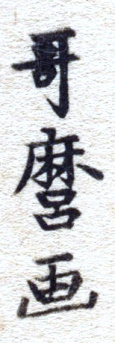Utamaro Kitagawa (1753-1806)
Utamaro Kitagawa stands among the most revered designers of ukiyo-e woodblock prints and paintings. His fame primarily rests on his bijin ōkubi-e, or "large-headed pictures of beautiful women," produced during the 1790s. Additionally, Utamaro demonstrated his versatility by creating nature studies, focusing on illustrated books featuring insects.
The details of Utamaro's life remain rather mysterious. His artistic career began in the 1770s, but it was in the early 1790s that he gained prominence with his distinctive portraits of beauties sporting exaggerated, elongated features. Despite the limited information available, it's estimated that Utamaro created over 2000 prints, a rare feat among ukiyo-e artists of his time. In 1804, he faced legal repercussions for producing illegal prints depicting the sixteenth-century military ruler Toyotomi Hideyoshi, leading to his arrest and subsequent death in 1806.
Utamaro's influence extended beyond Japan, reaching Europe in the mid-nineteenth century where his work enjoyed immense popularity, particularly in France. He played a pivotal role in influencing European Impressionists, who admired his use of partial views and emphasis on light and shade. Despite his legal troubles and untimely demise, Utamaro's legacy endures through his extensive body of work, which includes portraits of women, animal studies, and shunga prints, all contributing to his status as a legendary figure in the history of Japanese art.

|

|
Signatures: Utamaro ga (left), Utamaro hitsu (right)

